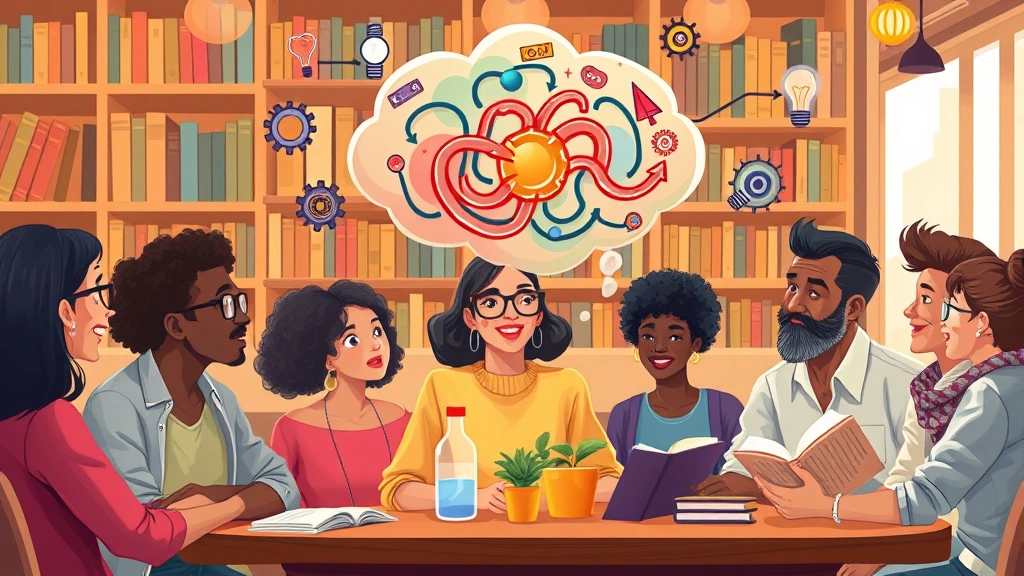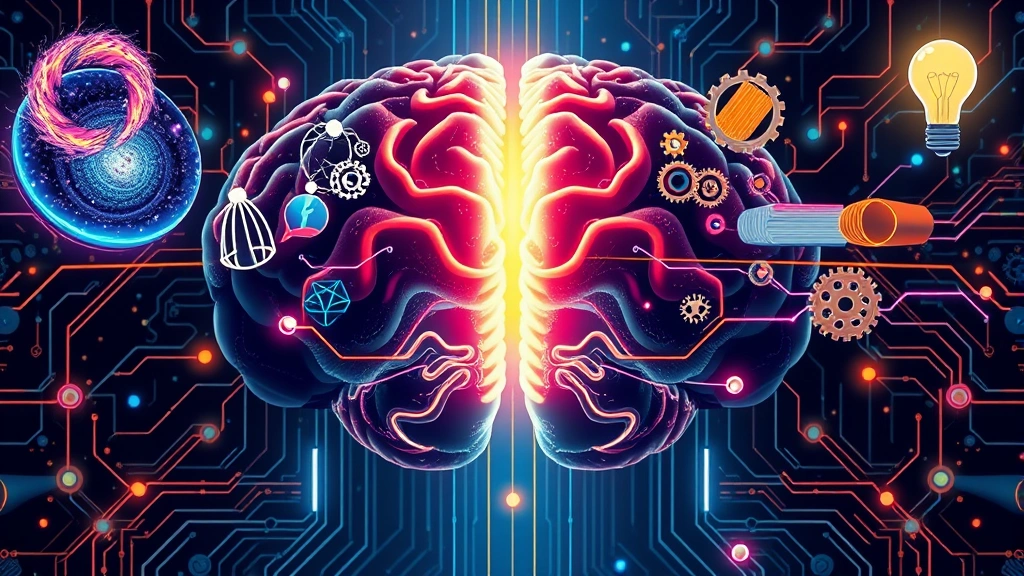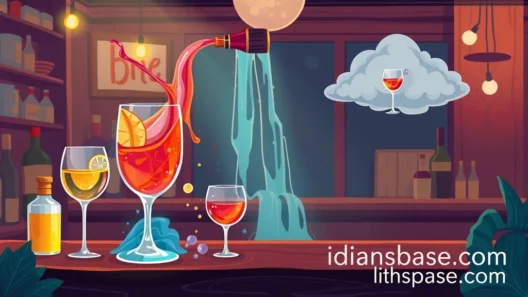Have you ever tried to explain a complicated idea to someone, and found yourself saying, "It's like…"? Or perhaps you've been on the receiving end, and suddenly, a complex concept just clicks into place because of a simple comparison. That, my friend, is the magic of metaphors! They're not just fancy literary devices; they're powerful tools that help us grasp the world around us, turning abstract notions into tangible, relatable images. In a global marketplace of ideas, understanding is key, and metaphors are your secret weapon for clarity.
The Power of Metaphors in Grasping Concepts
Why do metaphors work so well? Think of your brain as a supercomputer. It loves patterns and connections. When you introduce a metaphor, you're essentially giving your brain a shortcut, linking something new and unfamiliar to something it already knows. It’s like building a bridge from the unknown to the known, making the journey to understanding so much smoother and faster.
Why We Need Metaphors
- Simplification: They break down complex ideas into digestible pieces.
- Engagement: They make learning more interesting and memorable.
- Relatability: They connect new information to personal experiences.
- Clarity: They illuminate abstract concepts with concrete images.
Top Metaphors for Understanding
Let's dive into some fantastic metaphors that illuminate the process of understanding. These aren't just figures of speech; they're pathways to deeper comprehension.
1. Understanding as "Seeing the Light"
Imagine being in a dark room, fumbling around, unable to make sense of your surroundings. Then, suddenly, a light switch flips, and everything becomes clear. That's what "seeing the light" feels like when you finally understand something. It’s an instant illumination, a moment of clarity where confusion dissipates, and insight dawns. This metaphor emphasizes the suddenness and transformative power of comprehension.

2. Understanding as "Connecting the Dots"
Think of a complex puzzle with many scattered pieces. Individually, they don't make much sense. But as you start to connect them, a picture emerges. "Connecting the dots" perfectly describes understanding as the process of bringing together disparate pieces of information, ideas, or experiences to form a coherent whole. It’s about recognizing patterns and relationships that were previously obscured.
3. Understanding as "Building a Bridge"
When you truly understand something, you're not just memorizing facts; you're creating a connection between what you already know and new information. "Building a bridge" illustrates this beautifully. It suggests a structured, deliberate process of establishing connections, allowing you to move from a state of ignorance to a state of knowledge, safely and surely. This metaphor highlights the effort and construction involved in deep learning.
4. Understanding as "Digesting Information"
Just as your body digests food to extract nutrients, your mind "digests" information to extract meaning. This metaphor emphasizes the process of internalizing, breaking down, and assimilating new knowledge. It’s not enough to just consume information; you need to process it, make it your own, and integrate it into your existing mental framework to truly understand it.
5. Understanding as "Unlocking a Door"
Imagine a locked door, behind which lies a treasure trove of knowledge. Understanding is the key that unlocks it. This metaphor suggests that knowledge is often hidden or inaccessible until you find the right "key"—the insight, explanation, or perspective that grants you access. It evokes a sense of discovery and revelation, where a barrier to knowledge is removed.

6. Understanding as "Tuning a Radio"
Think about trying to find a specific radio station. You might hear static, or muffled voices, until you precisely "tune" the dial. Suddenly, the sound becomes clear, crisp, and understandable. This metaphor highlights the precision and alignment required for true comprehension. It's about adjusting your focus, perspective, or mental framework until you achieve perfect reception of an idea.
7. Understanding as "Grasping a Concept"
This common phrase itself is a metaphor! "Grasping" implies a physical act of seizing or holding something firmly. When you "grasp a concept," it means you have a firm hold on it intellectually; you're not just letting it slip away. It suggests a secure and comprehensive understanding, where the idea is firmly within your mental reach.
Key Takeaways
- Metaphors are powerful tools for clarity: They simplify complex ideas and make them relatable.
- Understanding is an active process: It involves connecting, building, digesting, and unlocking.
- Different metaphors highlight different aspects: From sudden insight ("seeing the light") to diligent effort ("building a bridge").
- Using metaphors enhances communication: They make your explanations more engaging and memorable.
Frequently Asked Questions (FAQ)
Q1: Why are metaphors so effective in communication?
Metaphors are effective because they tap into our existing knowledge and experiences. By comparing a new, abstract idea to something familiar and concrete, they create a vivid mental image that is easier to process, remember, and understand. They bypass purely logical processing and engage our imagination and emotions, making the message more impactful.
Q2: Can metaphors be misleading?
Yes, absolutely! While incredibly powerful, metaphors can sometimes be misleading if the comparison isn't appropriate or if it oversimplifies a complex reality. For instance, if you use a metaphor that carries unintended connotations or if the audience interprets it differently from your intention, it can lead to misunderstanding rather than clarity. It's crucial to choose metaphors carefully and ensure they genuinely illuminate the concept without distorting it.
Q3: How can I use metaphors to improve my own understanding?
To improve your own understanding, try to formulate metaphors for challenging concepts. If you're struggling with an idea, ask yourself, "What is this like?" or "How can I compare this to something I already know?" Creating your own metaphors forces you to break down the concept, identify its core characteristics, and relate it to familiar patterns. This active process deepens your comprehension and retention.
Q4: Are there cultural differences in how metaphors are understood?
Yes, definitely! Metaphors are deeply embedded in culture, language, and shared experiences. What makes perfect sense in one culture might be confusing or even offensive in another. For example, animal metaphors or metaphors related to specific historical events will vary significantly across different cultural contexts. When communicating globally, it's important to be aware of these cultural nuances and choose universal or widely understood metaphors, or explain them explicitly.
Q5: What's the difference between a metaphor and a simile?
The main difference lies in the word "like" or "as." A simile directly compares two unlike things using "like" or "as" (e.g., "Understanding is like a light switch"). A metaphor directly states that one thing is another, without using "like" or "as" (e.g., "Understanding is a light switch"). Both achieve comparison, but metaphors are generally more forceful and direct in their assertion.
Understanding is a journey, and metaphors are the fascinating maps that guide us. They transform the abstract into the tangible, making the complex accessible and the unfamiliar relatable. So, the next time you're trying to grasp a new idea, or explain one to someone else, remember the power of "it's like…" and let a well-chosen metaphor light up the path to clarity! What's your favorite metaphor for understanding? Share your thoughts and let's continue this conversation!







